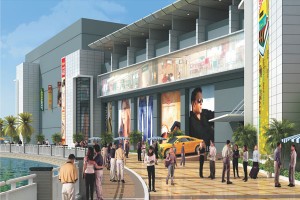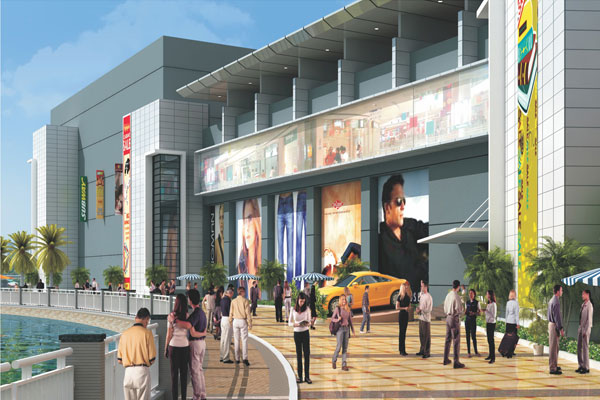Location is a key determinant for retail experience but it can not be the only USP of the malls, finds Track2Realty.
 Location matters and so does a good understanding of the consumer market where a mall is located. Successful retail positioning relies on research into the local consumer market and securing anchor tenants. Once a mall opens, retail property managers must be proactive in asset management, maintaining an optimal mix of tenants and tracking retailers’ performances.
Location matters and so does a good understanding of the consumer market where a mall is located. Successful retail positioning relies on research into the local consumer market and securing anchor tenants. Once a mall opens, retail property managers must be proactive in asset management, maintaining an optimal mix of tenants and tracking retailers’ performances.
In his book ‘The Call of the Mall’ Paco Underhill writes, “Nothing exemplifies shopping more than the mall or shopping centre. It is the gift to personal consumption and the crossroad where consumer marketing, media and street culture meet. It is where the developed world (and increasingly everyone else too) goes to acquire, eat and hang out. It is where fashion trends are made, dreams are constructed and many people find their first jobs.”
This may have been written about the US malls but sounds perfect success mantra for Indian malls as well. The big question is whether Paco ever sounds like talking about location? Well, this is where the focus of Indian malls shifts and often the location alone is expected to be the retail driver.
With the footfall decreasing, sales conversion few and far between along with the emerging reality of e-commerce threatening the very existence of Indian store-driven retail, business was never as challenging for the retail spaces in the country as now.
The fancy idea of catchment area on the basis of just habitation in the neighbourhood has hit the retailers and the mall developers hard. While the poor access road and other logistical challenges were not addressed for long, the fact that hypothetical catchment area lead to over-supply of retail spaces in many potential areas played the dampener after initial experiment phase.
Now with the emerging realities of e-commerce, it seems the retail planners in this country will have to do some serious cost & benefit analysis. Analysts believe the problem with the first generation of malls in India has been that the developers by and large subscribed to the ‘build it and they will come’ theory. This has been a result of the inexperience in mall management because most mall managers are the same developers who built them. Since most of the developers did not have retail experience, the design and leasing control has not been ideal.
Col. Ashutosh Beri, Managing Director (West), Project & Asset Management, JLL India maintains that there are basic parameters that mall developers must keep in mind at the very conception and design stage of their malls. Location is, of course, a vital ingredient for the success of any mall. Approach and accessibility, especially in terms of proximity to the key centres and ingress and egress of the mall, are equally important. The mall must have adequate facilities and provide retailers with good accessibility to their stores, space for storage and staff utilities. Very importantly, it must get the parking equation right.
“The baseline philosophy behind the creation of any mall is that it must be a place that continually attracts people into its premises, keeping them engaged and tempting them to stay for longer periods. This cannot be done just by providing a massive number of shops. Today, Indian mall visitors expect various entertainment options and engagement mechanisms, as well. Malls cannot be just shopping complexes; they must be one-stop family destinations. If they fail at this, they invariably fail completely,” says Beri.
Abhay Kumar, CMD of Grih Pravesh Buildteck admits that the location can make or break mall. He, however, points out that the same location can be a liability also as it has often been noticed that certain locations attract the developers so much that there is an over-supply of same kind of retail spaces in the neighbourhood. This evidently suggests that the success of malls is dependent on a combination of factors working in tandem.
“I must admit that mixing the right location, brand presence and overall sales strategy is challenging and easier said than done. But then the business of providing retail spaces itself is challenging in the wake of stiff competition in the segment and ever evolving concepts like e-commerce that is increasingly gaining ground in the country,” says Abhay.
“Location, of course, is important and the concept of retail the world over is about the neighbourhood shopping,” says Sanjey Roy, DLF spokesperson. “But to think that the location alone will be retail driver is a misnomer and has misled many of the developers in the business of malls. Your mall has to have some USP that proves to be a market differentiator and acts like a magnet for not just attracting footfalls but destination shopping. However, there is no one-size-fits-all solution and every mall developer has to devise his own strategy,” Roy adds.
Dhiraj Jain, Director, Mahagun says the question of location reminds him the famous 4 P’s theory of Philip Kotler which has precisely stated Place has a distinctive role to play in the visibility of brand. He points out that the impact is evident from the footfalls that retail space attracts. The retail space will have customers’ traffic engaged in shopping, spending time with family and big corporate giants opening their offices there.
“Along with location, the demographic mix of the location plays a vital role in choosing the space. While the youth population looks for an entertainment zone, the elderly / matured community looks forward to spend their weekends in those malls where more food options along with sitting areas to relax with the family are available. Excellent connectivity to reach there at any point of time also adds to the footfall of the mall. The developer must also do a dipstick study of the kind of disposable income the target group is ready to invest on fashion, food and fun, so that they can accordingly do tie-ups with brands for operating the malls,” says Jain.
Amit Modi, Wholetime Director of ABA Corp admits that location has a huge impact in retail success of any brand/venture, as it is completely proportional to the retail footfall of the area and corresponding brands and ventures in the vicinity.
“As a Developer we only invest towards retail or commercial realty in case it has an assured return on investment potential for investors, both in terms of area location and area footfall. That is one of the reasons for including retail space in our housing project as the location offers guaranteed footfalls from the catchment area,” says Modi.
Mall strategy and speciality have been over-used term in the Indian retail history which now is nearly two decades old. However, in terms of the look & feel and usage of the customers most of the malls are pretty identical. Even in terms of the brand presence there is hardly anything that comes out as the differentiator; whereas the customers are looking for something tempting that could turn their casual footfall into compelling buying decision. Location, of course, is a key driver but the land or location competence alone can not substitute for the poor retail experience in a cluttered market with many identical malls in the vicinity.
Location Matters
- Location is a key determinant for retail experience but it can not be the only USP of the malls
- Location matters and so does a good understanding of the consumer market where a mall is located
- Successful retail positioning relies on research into the local consumer market and securing anchor tenants
- Once a mall opens, retail property managers must be proactive in asset management, maintaining an optimal mix of tenants and tracking retailers’ performances
Experiential shopping
- Should be a gift to personal consumption
- A crossroad where consumer marketing, media and street culture meet
- A place where the developed world (and increasingly everyone else too) goes to acquire, eat and hang out
- Where fashion trends are made, dreams are constructed and many people find their first jobs
Mall Magnets
- Must be a place that continually attracts people into its premises, keeping them engaged and tempting them to stay for longer periods
- Indian mall visitors expect various entertainment options and engagement mechanisms
- Malls must be one-stop family destinations





